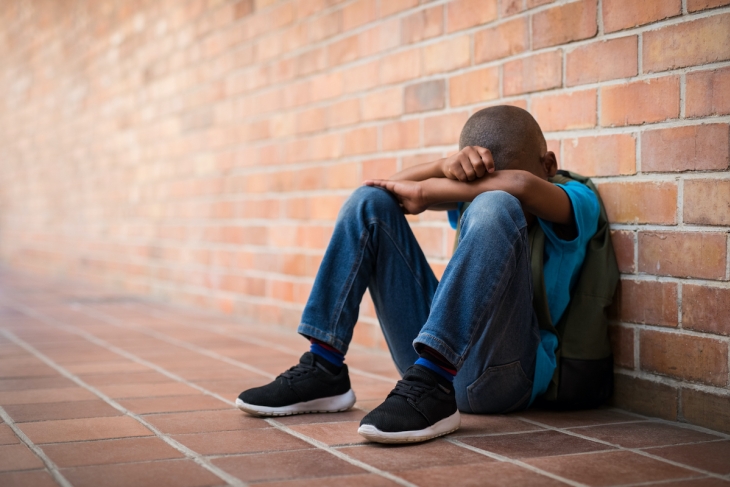As national unrest builds along with the deaths of George Floyd, Breonna Taylor, and too many others at the hands of police officers, people worldwide are responding with marches, protests, critical reflection, and grief. Right now, the Black Lives Matter movement rages on. But what lies in the long-term for those in Minneapolis and other cities where police have murdered one of their own residents? A new working paper by Harvard professor Desmond Ang gives insight into the potential ramifications of recent police killings, particularly on the educational and psychological well-being of youth in those areas.
To be sure, it’s difficult to find causal evidence of the social impact of police use of force on local communities because police killings aren’t random and are more likely to occur in disadvantaged areas with high poverty and crime rates and other correlated characteristics. Ang’s contribution to the literature, then, is his comparison of students within the same neighborhoods but who live either very close to a killing (treatment group) or slightly further away (control group). This analysis allows him to identify a causal relationship through examination of two groups who come from similar backgrounds and were likely exposed to similar local conditions other than the killing itself.
Ang obtains his data from two sources, one containing home addresses and individual-level panel data for all high school students enrolled from 2002–16 in a large urban school district in the Southwest U.S., and the other containing incident-level information on officer-involved killings in the surrounding county. With over 700,000 addresses and 627 incidents over fifteen years, he calculates each student’s precise geographic proximity to police violence and uses a difference-in-differences statistical design to compare changes in students’ academic outcomes and emotional well-being (measured by self-reported feelings of safety and the number of students designated as “emotionally disturbed”) from those who lived within 0.5 miles of a killing to those from the same neighborhood who lived between 0.5 and 3.0 miles away from the killing. (It’s worth noting that three miles goes a long way in a city, but the overall results still hold as the control group shrinks from students living within one or two miles from an incident.)
Ang finds that living closer to police killings leads to persistent drops in grade point averages, lower rates of high school completion and college enrollment, and increased incidence of emotional disturbance. For students within 0.5 miles of the incidents, GPAs significantly declined by 0.04 points in the semester of a shooting and between 0.07 and 0.08 points in the two subsequent semesters. These effects predict a roughly 1.7 percentage point decrease in graduation rate and 0.09 percentage point decrease in college enrollment among ninth and tenth graders. Nearby students are also twice as likely to report feeling unsafe outside of school the year after a killing, and are 15 percent more likely to be classified as emotionally disturbed in the following semesters.
Inserting race into the equation only corroborates what we’ve witnessed over and over. These harmful effects are driven entirely by Black and Hispanic students in response to police killings of Black and Hispanic individuals. That is, Ang saw no significant impact on White or Asian students and no effects for police killings of White or Asian suspects. This is consistent with large racial differences in concerns about police brutality, suggesting that the educational spillovers of police killings may derive in part from perceptions of discrimination and injustice.
The fight against institutional racism and police misconduct should be taking place not only in the streets, but also in our schools. This is a teaching moment about the United States’s longstanding sociopolitical history of racism and how it still permeates through every sector of society today. But this is also a critical period to support and validate our Black and Brown students. Police killings of underrepresented minorities evidently exacerbate the already-too-wide racial academic achievement gaps. We have to do whatever we can to keep them from falling further through the cracks.
SOURCE: Desmond Ang, “The effects of police violence on inner-city students,” Working Paper (2020).




